In this article we will get to know about Forest Ecosystem Examples.The Amazon Rainforest, covering over 5.5 million square kilometers, is a prime example of a forest ecosystem. It’s home to about 390 billion individual trees, 16,000 tree species, and 10% of the world’s known biodiversity, including over 2.5 million insect species.
As for examples of forest ecosystem example, they are mainly of many types:
- Temperate forest ecosystem
- Boreal or Taiga forest ecosystem
- Tropical forest ecosystem
- Savanna Ecosystem
- Moist Tropical forest
- Dry Tropical forest
- Montane Temperate forest
- Montane Subtropical forest
- Alpine forest
- Coniferous forest
- Broadleaved forests
- Evergreen forests
- Wet Evergreen forests
- Semi- Evergreen forests
- Deciduous forests
- Thorn Forests
- Mangrove forests
What is forest ecosystem?
A forest ecosystem is a functional unit of nature where birds, insects, trees, animals, soil are its units of network, all the living organisms thrive, interact with themselves as well as with the environment. A forest is a wide area of land with various special diversities having a multiple ecosystem.It is a part of a terrestrial ecosystem.
The structural features of mainly consists of two types –
- a) Composition of species and
- b) Stratification.
- Identifies the record of total species of flora and fauna in a particular forest.
- Defines the hierarchical flowchart of different species based on their nutrition , food habits and producing capacity. For eg, trees remains at the top of the flowchart ; and shrubs or herbs remains below .
Components of forest ecosystems –
Those are mainly divided into various points and those are as discussed below:
Productivity-
The main foundation of all ecosystems is to sustain, adapt in a suitable environment and to produce food utilizing adequate sunlight. Two types of productivity found are, primary and secondary productivity. Primary productivity is the amount of product(biomass) generated by the primary producers, plants over a period of time.
Further classifications of primary productivity are GPP (Gross Primary Productivity) and NPP (Net Primary Productivity). Gross productivity is defined as the rate of binding of the solar energy for the complete production of biomass. On the other hand, Net Productivity is the amount of remaining biomass present in plants or producers which becomes the food for herbivores.
Secondary productivity refers to the rate of absorption of food energy by the consumers, the class of living beings who are unable to generate food on their own.
Decomposition-
It is a procedure in which the organic components are degraded into simpler inorganic compounds. In this process the complex organic compounds or named as debris transforms into substances like water, nutrients and carbon dioxide mainly. The debris consists of dead remains of trees, flowers, leaves, barks etc. and mostly fecal matter of animals. The different stages of this process are a) fragmentation, b) leaching, c) catabolism, d) humification and e) mineralization.
- Here, small organisms that feed off the debris, scatters the debris into smaller particles.
- It is the process of releasing nutrients in the water and it enters into the soil. These nutrients act as the immediate one for the floral ecosystem when needed.
- It occurs when the bacterial, fungal enzymes diassembles debris further into simpler inorganic substances.
- It involves accumulation of humus formed by highest degree of decomposition at a specific rate over a period of time.
- Here, humus experiences further break down by microbes and as a nutrients are released.
Energy Flow-
Unidirectional transfer of energy of organisms from higher strata to lower strata in the food chain. For eg, plants absorb sunlight and the energy(photons) are being transferred to the herbivores, then herbivores to carnivores etc. This acts in a pyramidical way, the Energy Pyramid is effective when energy is transferred, but some amount of energy is lost in the form of heat.
Nutrient Storage-
This process stores and transfers nutrients in the ecosystem and continues to do so in a repetitive cycling manner. Two types of nutrients involved- sedimentary and gaseous. For the sedimentary nutrients our planet acts as a great storage and air is for the gaseous nutrients.
Therefore, all of these points are crucial for the ecosystem; living beings; humans to sustainand if any of these cycles are disrupted then the source of basic needs of living i.e. air, water, food will be at stake.
Forest ecosystem Examples–
The Temperate Ecosystem:
These forests are found where climate changes drastically from summer to winter. The trees here are of two types: deciduous and evergreen. The deciduous trees sheds sown in winter while the evergreen trees have leaves throughout the year. The temperate ecosystem is mainly found in the regions of California, Oregon, Washington etc. in the United States. The scope of these forest is dependent upon how much rainfall occurs in that area; more the rain, more the development of forest areas.
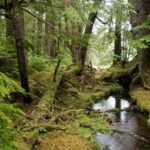
The Tropical Rain Forest Ecosystem:
It is the most important forest areas on Earth, as it is the shelter of millions of plant and animal species. The trees in this type of forest has usually huge heights and the branches, sub-branches form a roof called canopy which shelters the small growing plants from the harmful rays of the sun.
Rainfall occurs on an average of 80 inches per year and the temperature does not vary much but has a warm weather. These forests are found in the belts of Brazil, South America collectively known as The Amazon; other parts are found in Central and West Africa.
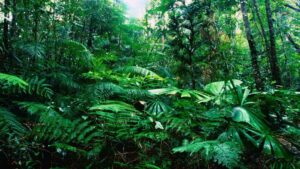
Boreal or Taiga Forest-
In the cool higher altitude the forests that are in abundance are mainly these forests. They are mainly found in the northern hemisphere regions and mainly comprises of coniferous trees or evergreen trees. The term boreal means the southern part of the ecosystem while the taiga means the northern part where it extends to the tundra region.
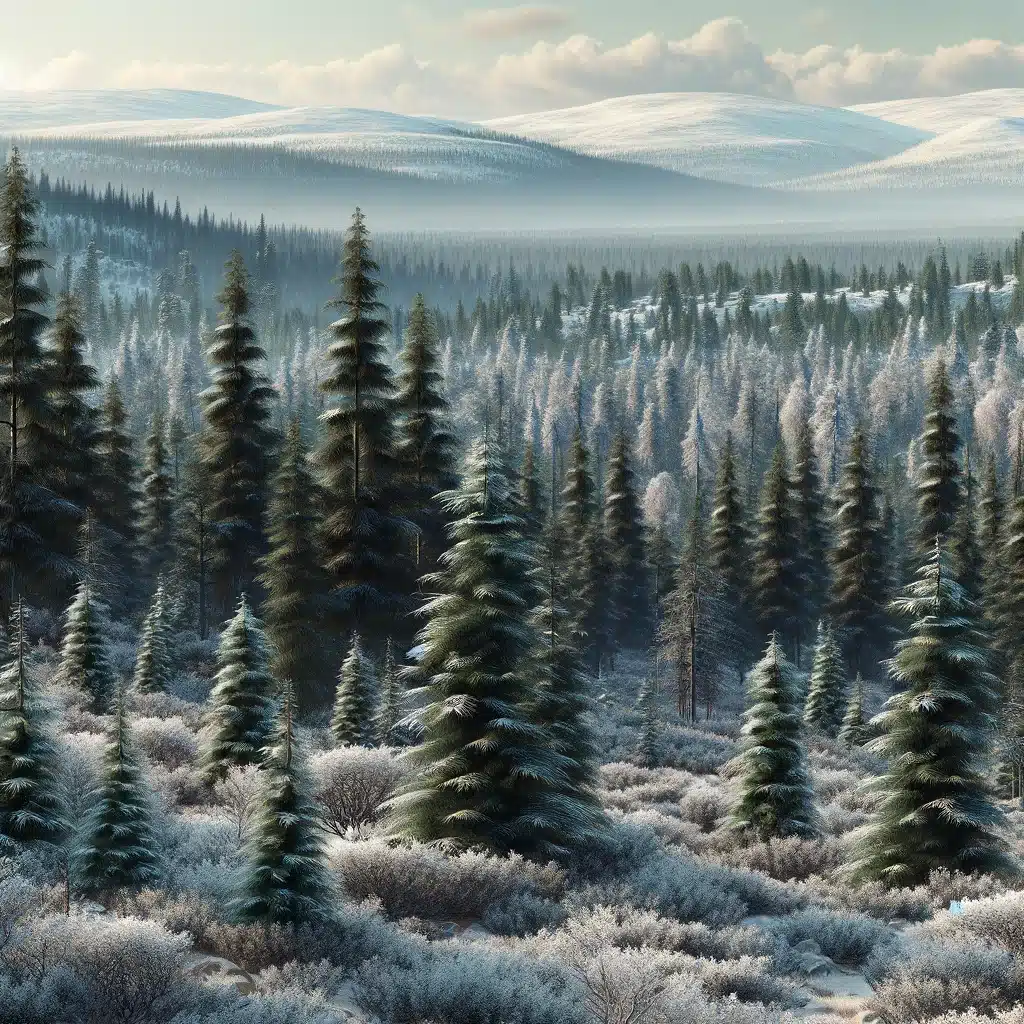
The temperatures lies between 21 degrees in summer and reaches upto -54 degrees in winters. Many plants and trees possess mycorrhizal fungi in their root system to get nutrients from the soil. Mosses, and some common trees like spruce, hemlock, larch, pine are in abundance. The trees are scattered accordingly to different parts of the region like, in Northern America spruces are found, in the East Siberia basically it is the larch forest.
Savanna Forest –
This mixed forest consists of both the woody and grassy ecosystem with huge spaced areas, it is both dry as well as wet at the same time. Most frequently tall grasses are found which makes the place perfect for grazing animals. The forest is located in the tropical or subtropical regions having rainfall only in specific seasons.
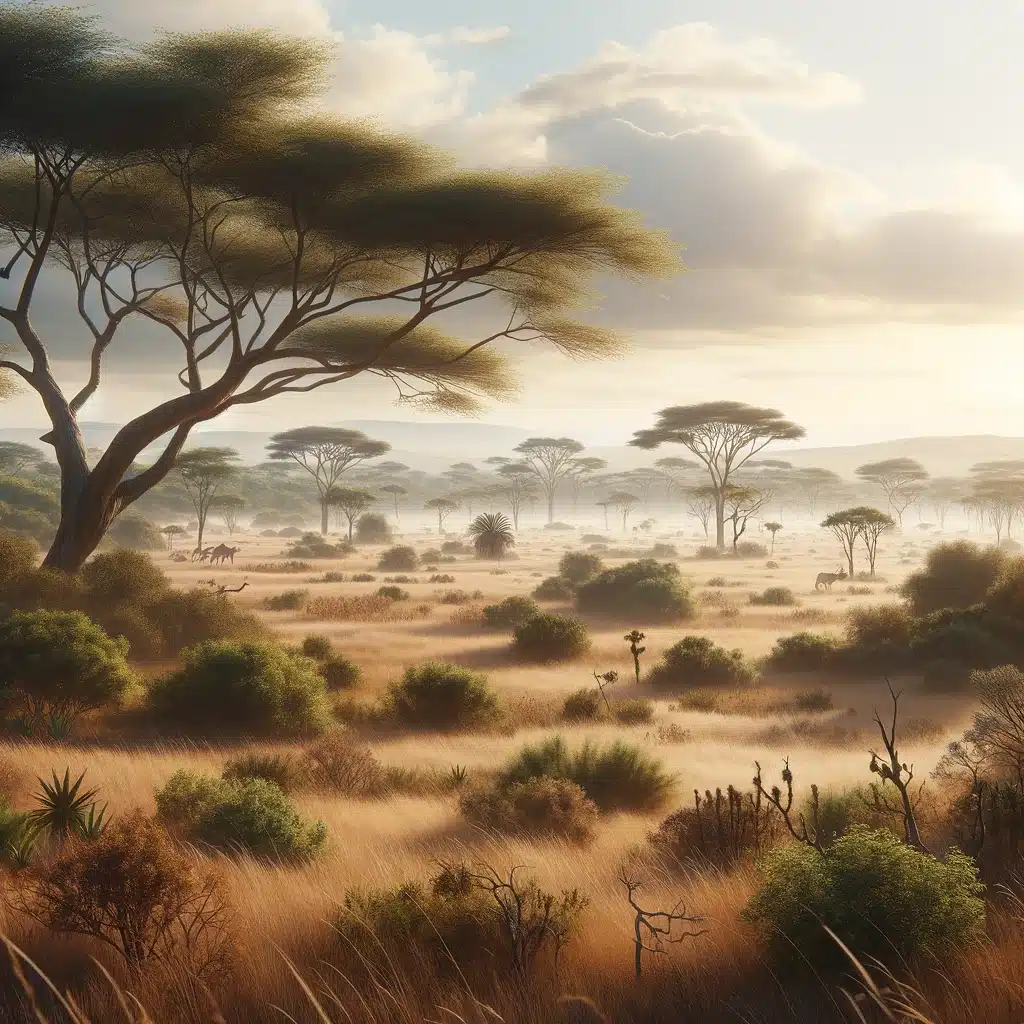
Savanna biome are found in places like, Serengeti stretches of Tanzania; East Africa; the Australian Savanna etc. The climate in Savanna is very warm throughout. When the lightening occurs, frequent forest fires take place especially in dry weather. But because of the strong root anchorage in the trees, they can regrow faster from the disaster.
Moist Tropical Forest-
Moist Tropical Forests, like the Amazon Rainforest, harbor about 50% of Earth’s species. They have an average tree density of 550-750 trees per hectare and high species diversity, with up to 300 species per hectare. Carbon storage is significant, averaging 180-200 metric tons of carbon per hectare.With the decent amount of rainfall and annual temperature the forest degenerate into semi evergreen forest. It Is found in the Western Coast, Upper Assam regions etc.
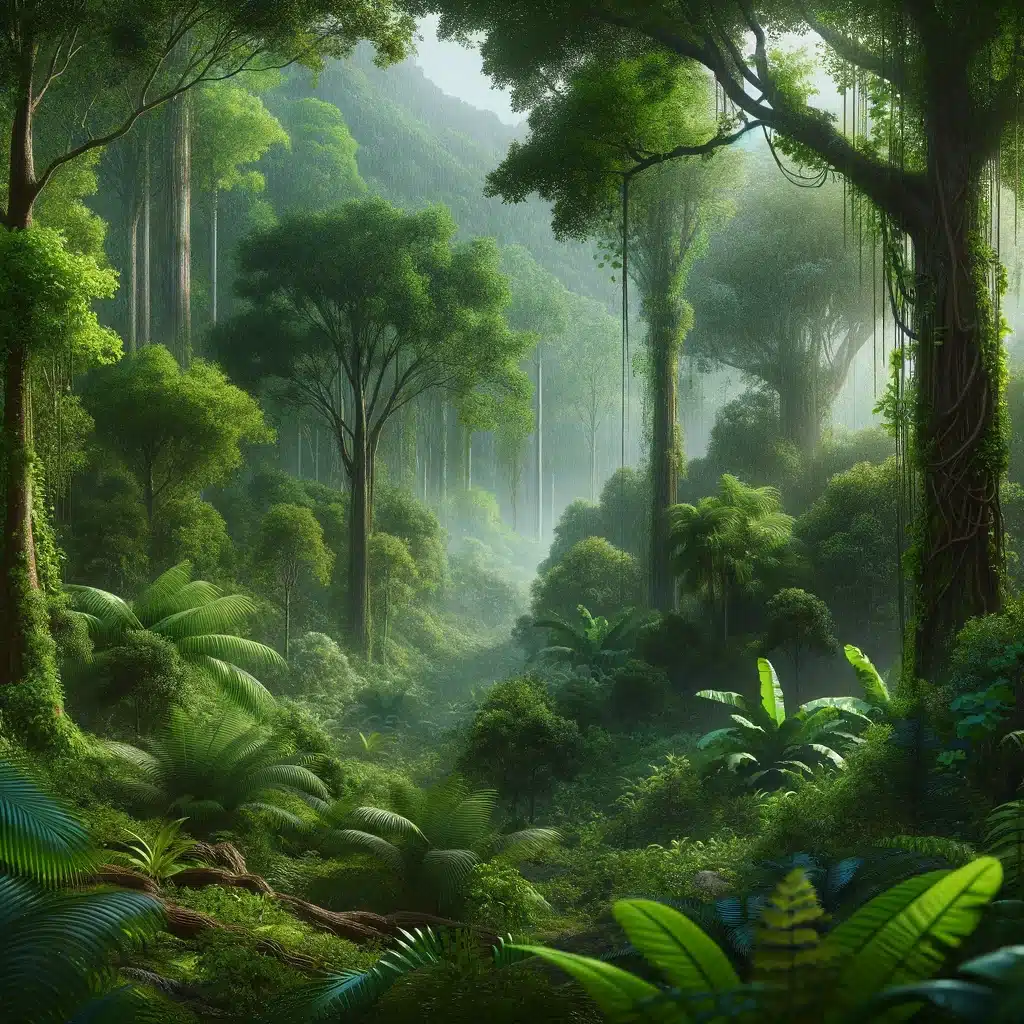
Dry Tropical Forest-
Dry Tropical Forests, such as India’s Gir Forest, exhibit diverse flora and fauna adapted to arid conditions. These forests have lower tree density (100-500 trees per hectare) and store around 50-100 metric tons of carbon per hectare. Species diversity is lower compared to moist forests, with about 50-100 species per hectare.Dry Tropical Forest are found in northern and southern part of India where rainfall varies from 51-151 cm, trees remain dry in winter, significant trees found are bamboo, acacia, mangoes etc.
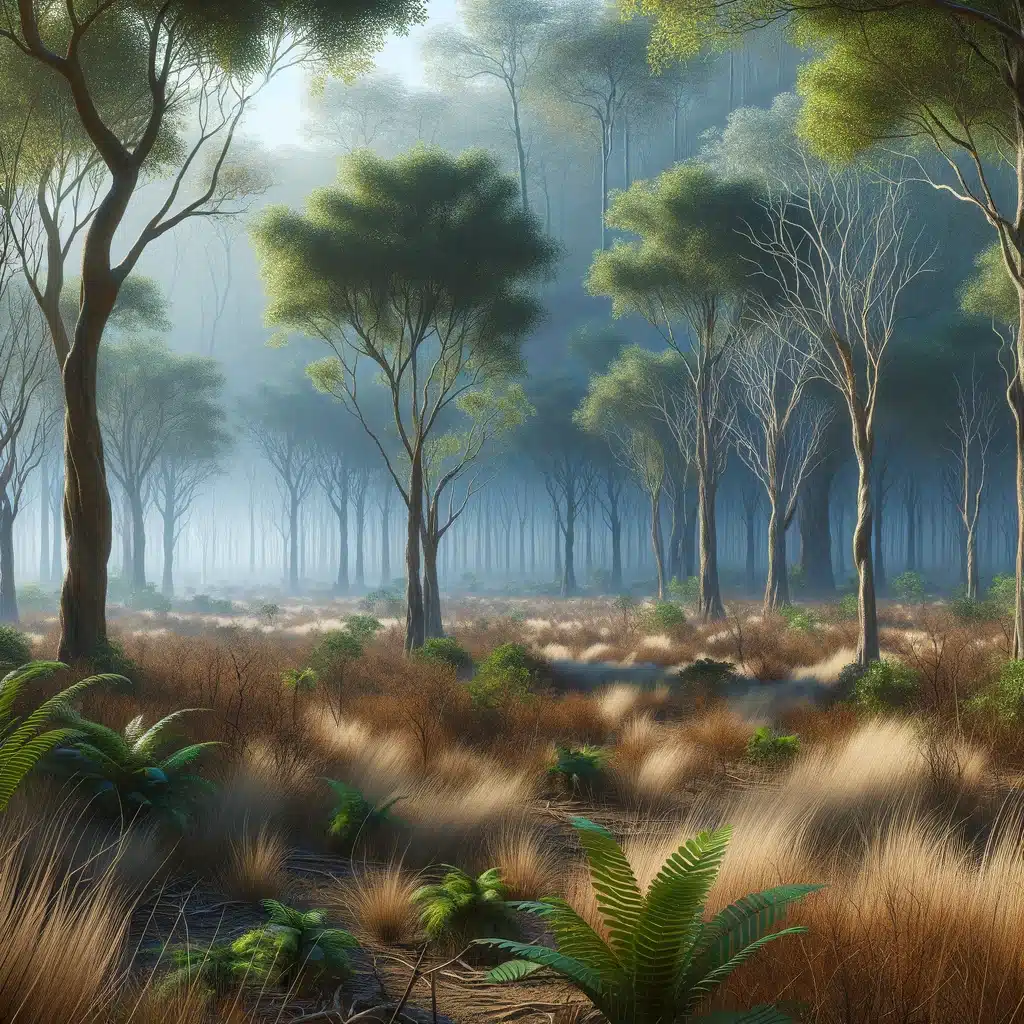
Montane Temperate Forest-
Montane Temperate Forests, like the Appalachians, are found at 1,000-2,500 meters elevation. They have a moderate tree density of 200-600 trees per hectare. Carbon storage is about 150-170 metric tons per hectare. Species diversity varies with elevation, averaging 100-200 species per hectare. In the northern middle Himalayas trees like oak, maple, rhododendron, ferns are found.
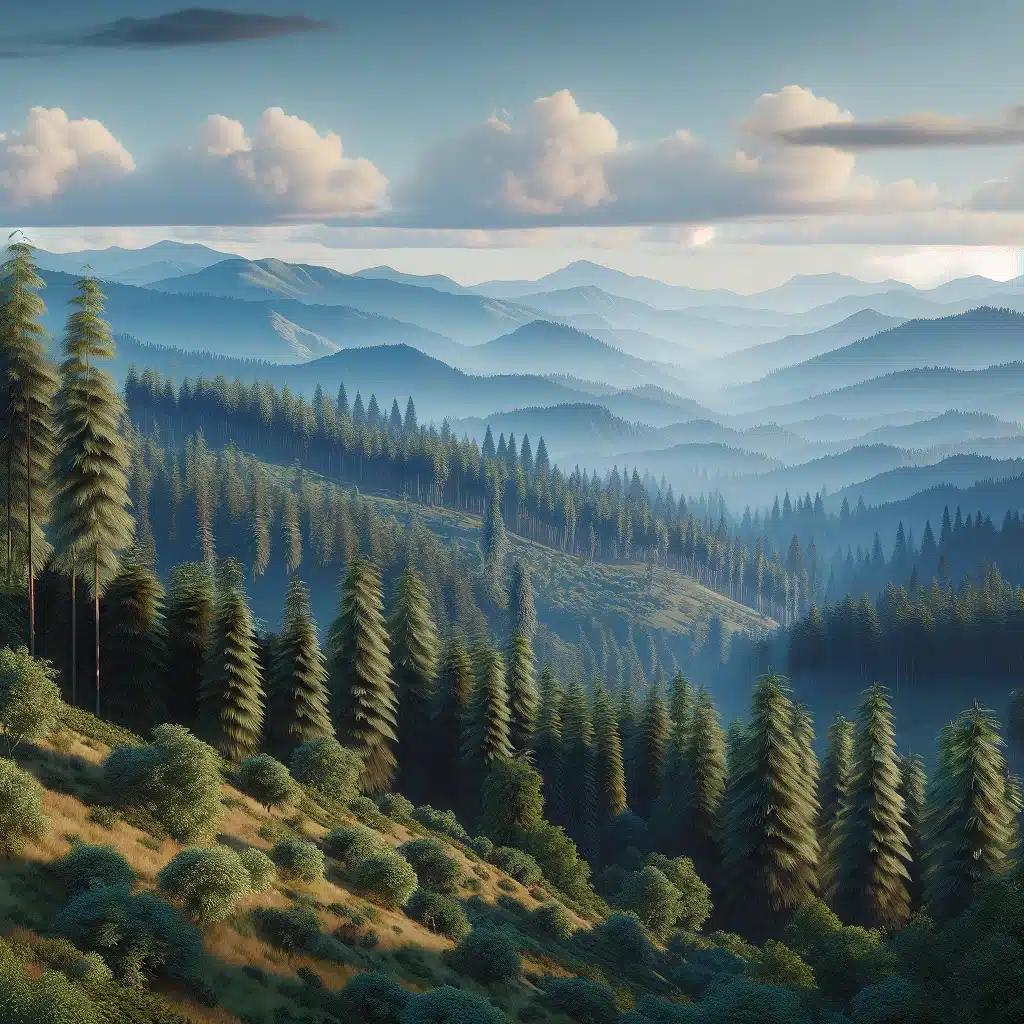
Montane Subtropical Forest-
Montane Subtropical Forests, found typically between 1,000-2,000 meters, exhibit a unique blend of flora and fauna. Tree density varies from 300-700 per hectare, with species diversity ranging from 200-300 species per hectare. These forests, like those in the Himalayas, store approximately 160-180 metric tons of carbon per hectare.Especially, in the states of Mizoram, Meghalaya, Assam, Nagaland these are found. Trees of this subtropical forest are sal, sandal, olive etc.
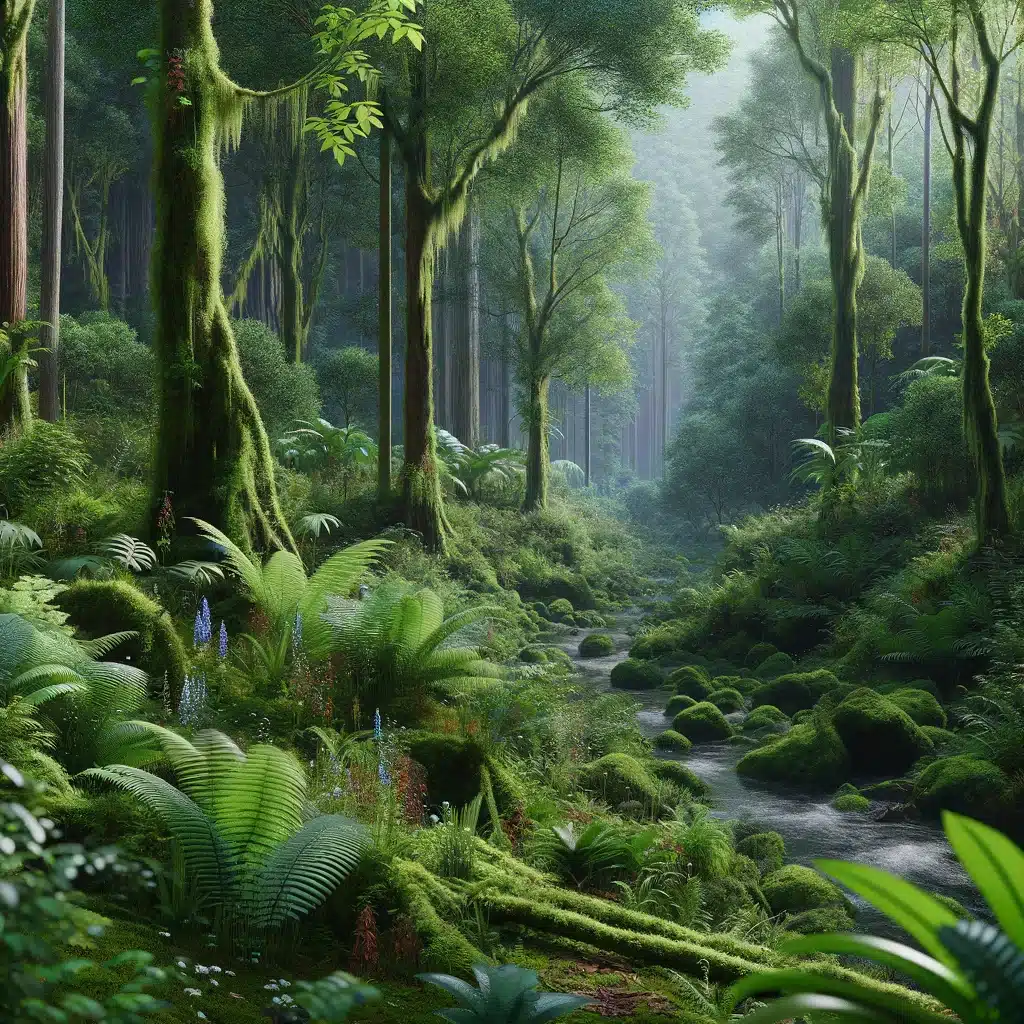
Alpine Forest-
Alpine Forests, located above the tree line at 2,500-3,500 meters, experience extreme weather. Vegetation is sparse, with a tree density of 50-200 per hectare. Carbon storage is low, around 40-60 metric tons per hectare. Species diversity is limited due to harsh conditions, with around 30-60 species per hectare.These forests grow at a level of 3000 m up below the snowline. These are common in both Himalaya and cold desserts of Tran Himalaya. The height of the vegetation do not grow above 1.5 m. Snow cover the forest for 5 months and the trees found are black juniper, drooping juniper, honeysuckle and willow.
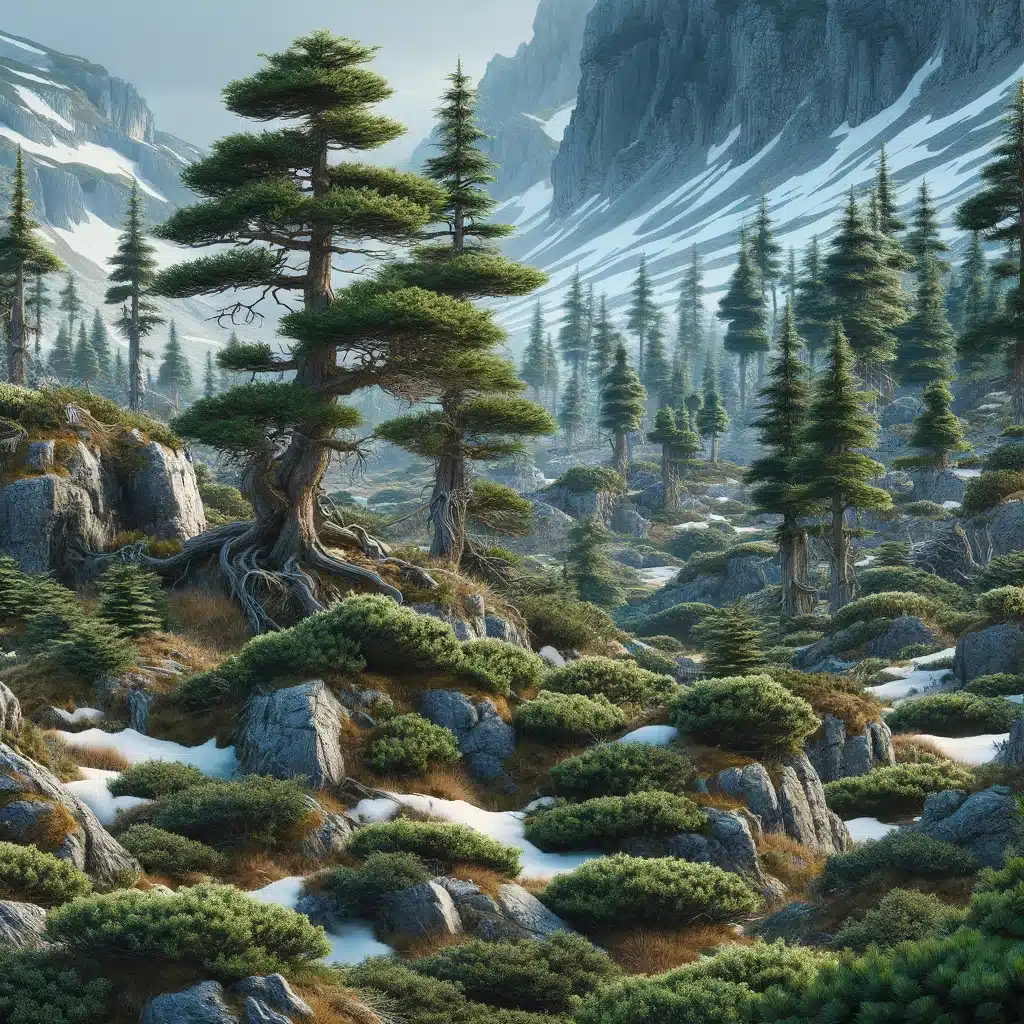
Coniferous Forest-
Coniferous Forests, like the Taiga, are characterized by a high density of conifer trees (500-1,000 trees per hectare). They are significant carbon sinks, storing about 200-300 metric tons of carbon per hectare. Species diversity is relatively low, with 20-80 species per hectare, due to the dominance of conifer species.They Found in the areas of warm summers like, Nepal, India, Bhutan and trees found are, spruces, pines, firs etc.
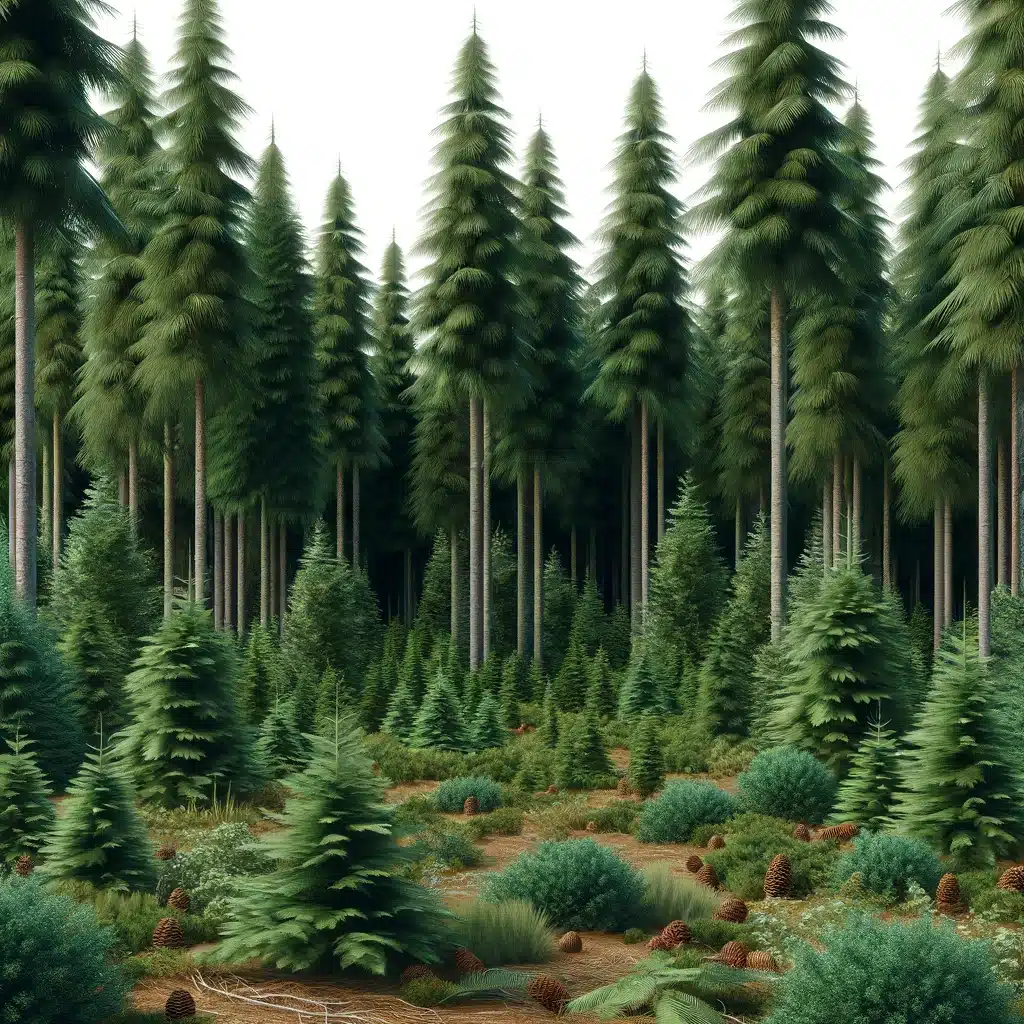
Broadleaved Forests-
Broadleaved Forests, often deciduous like the European Beech forests, have a tree density of 400-800 per hectare. They store around 100-150 metric tons of carbon per hectare. These forests are biodiverse, hosting 100-250 species per hectare, owing to a variety of broadleaved tree species.These forests shed leaves in each fall and develops in each spring, with a decrease in latitude more evergreen broadleaf trees appear.
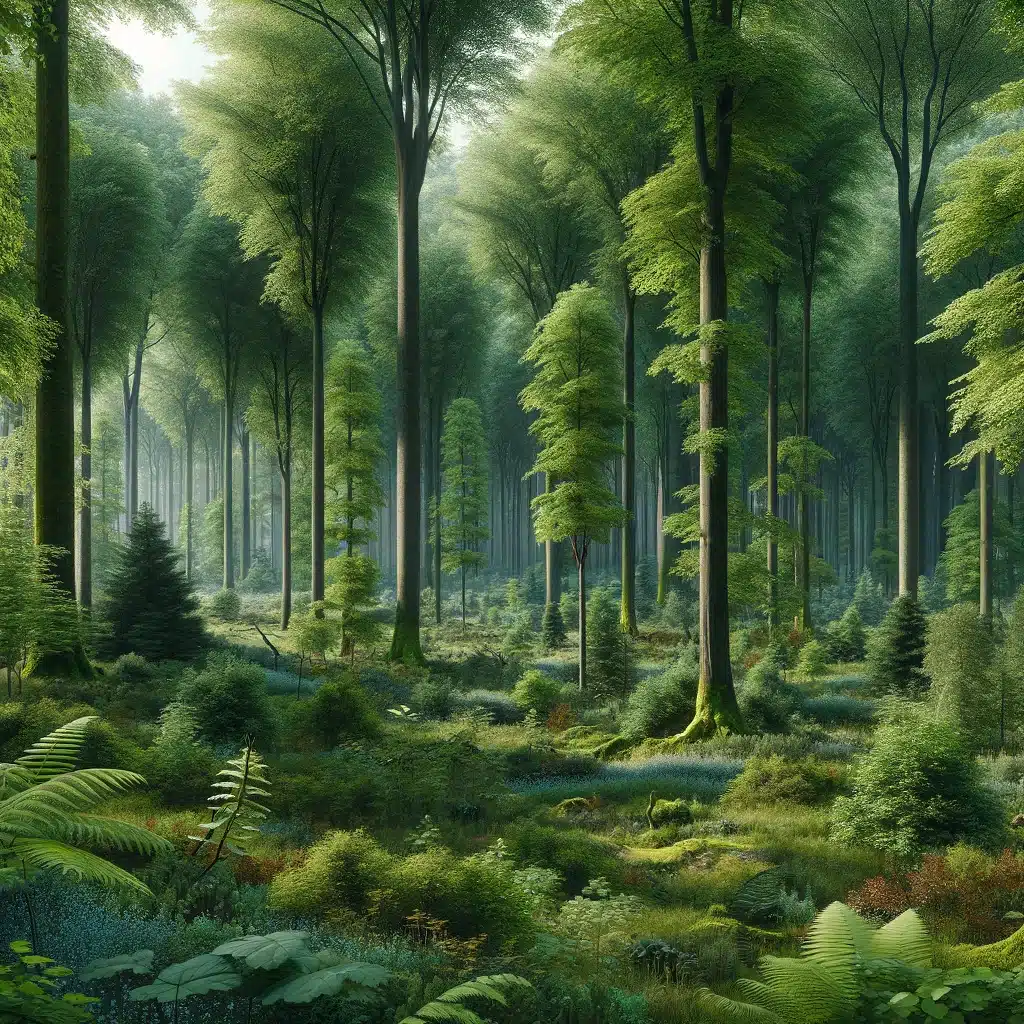
Evergreen Forests-
Evergreen Forests, such as the Southeast Asian Rainforests, maintain their foliage year-round. They have a high tree density (600-1,000 per hectare) and significant carbon storage (180-220 metric tons per hectare). Species diversity is high, with 250-400 species per hectare, due to constant growing conditions.They occur in climatic areas where there is huge difference in climate. Eucalyptus, oak, acacias, banksia are its species.
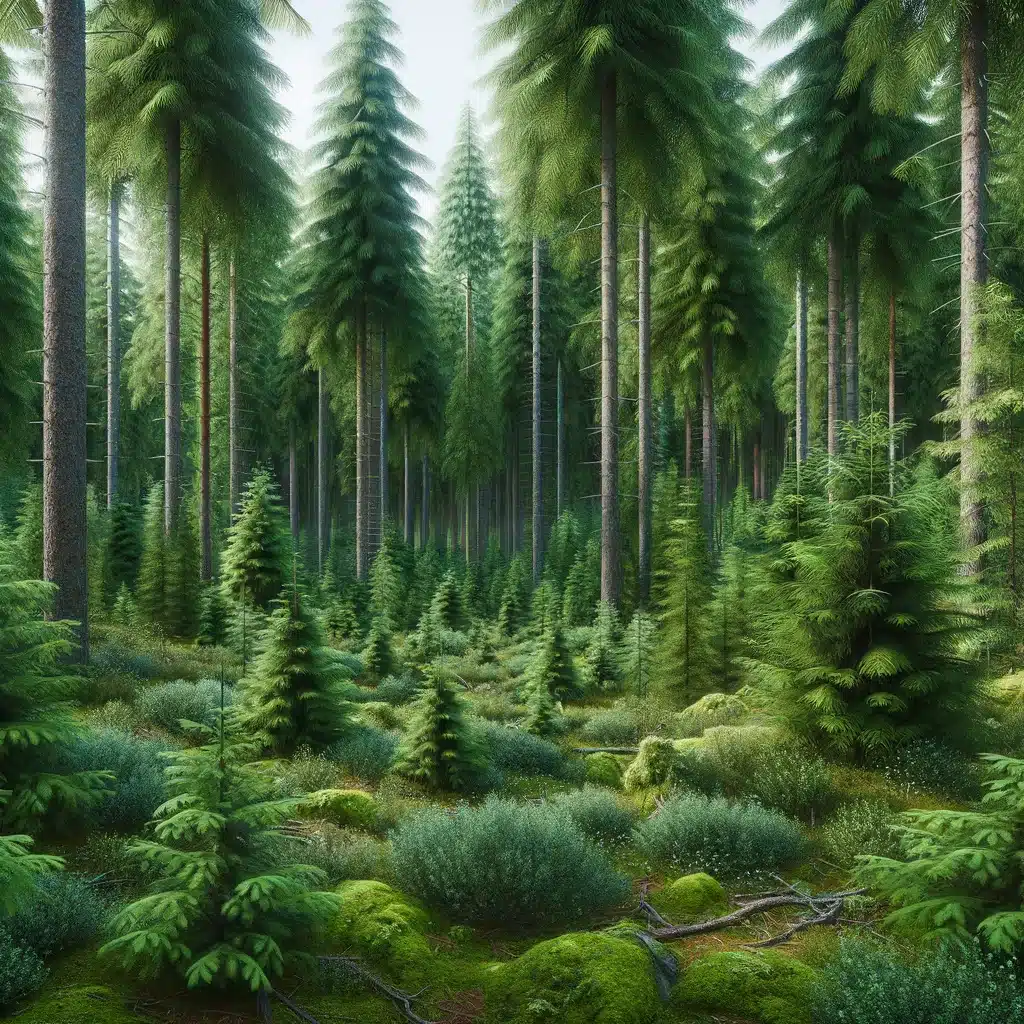
Wet Evergreen Forest–
Wet Evergreen Forests, like those in the Western Ghats of India, thrive in areas with high annual rainfall (over 2,000 mm). They exhibit a dense tree canopy with 800-1,200 trees per hectare. Carbon storage is substantial, around 200-250 metric tons per hectare. These forests are biodiversity hotspots, hosting up to 400-500 species per hectare.
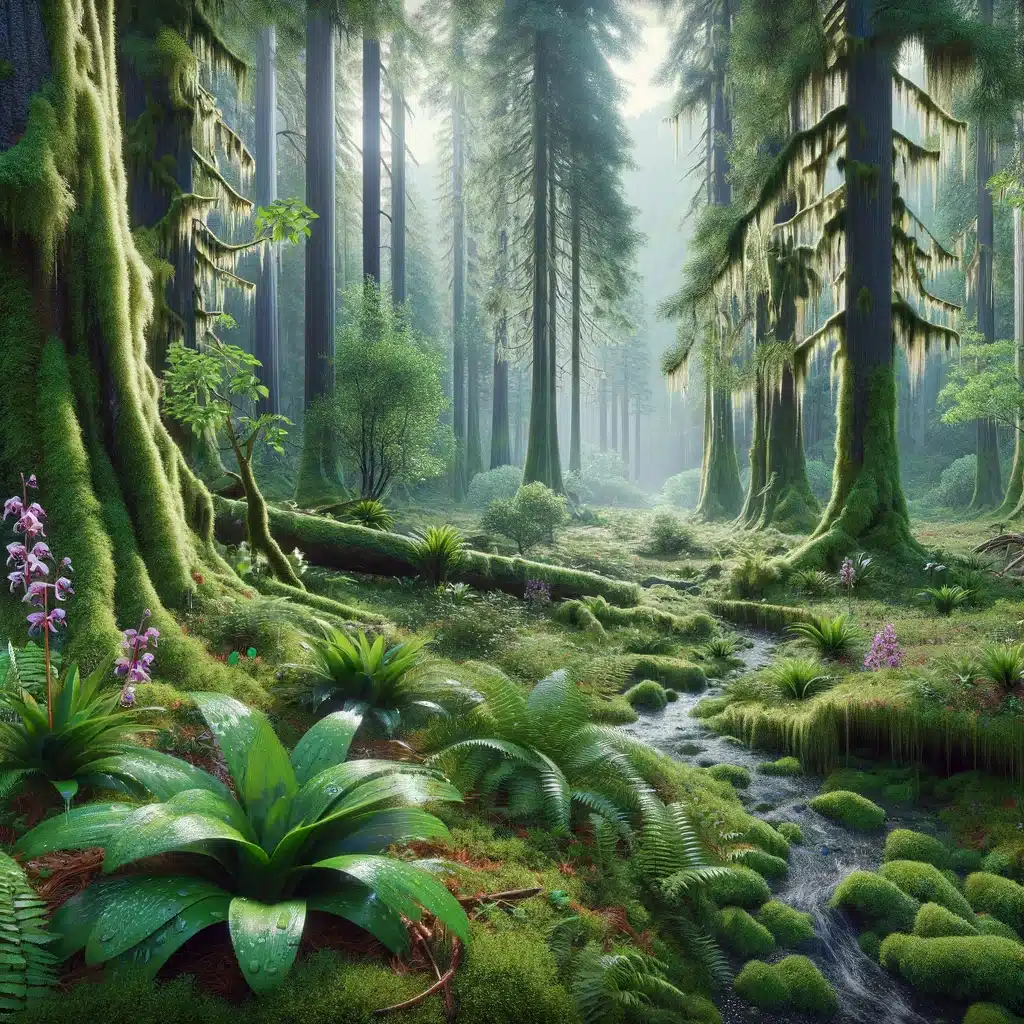
Semi-Evergreen Forest-
Semi-Evergreen Forests, found in regions like the Amazon basin, represent a transition between wet evergreen and deciduous forests. They have a tree density of 600-900 per hectare and store approximately 160-200 metric tons of carbon per hectare. Species diversity is high, with 300-450 species per hectare, encompassing a mix of evergreen and deciduous species. Trees like laurel, rosewood, thorny bamboo, mesua, white cedar etc, are found.
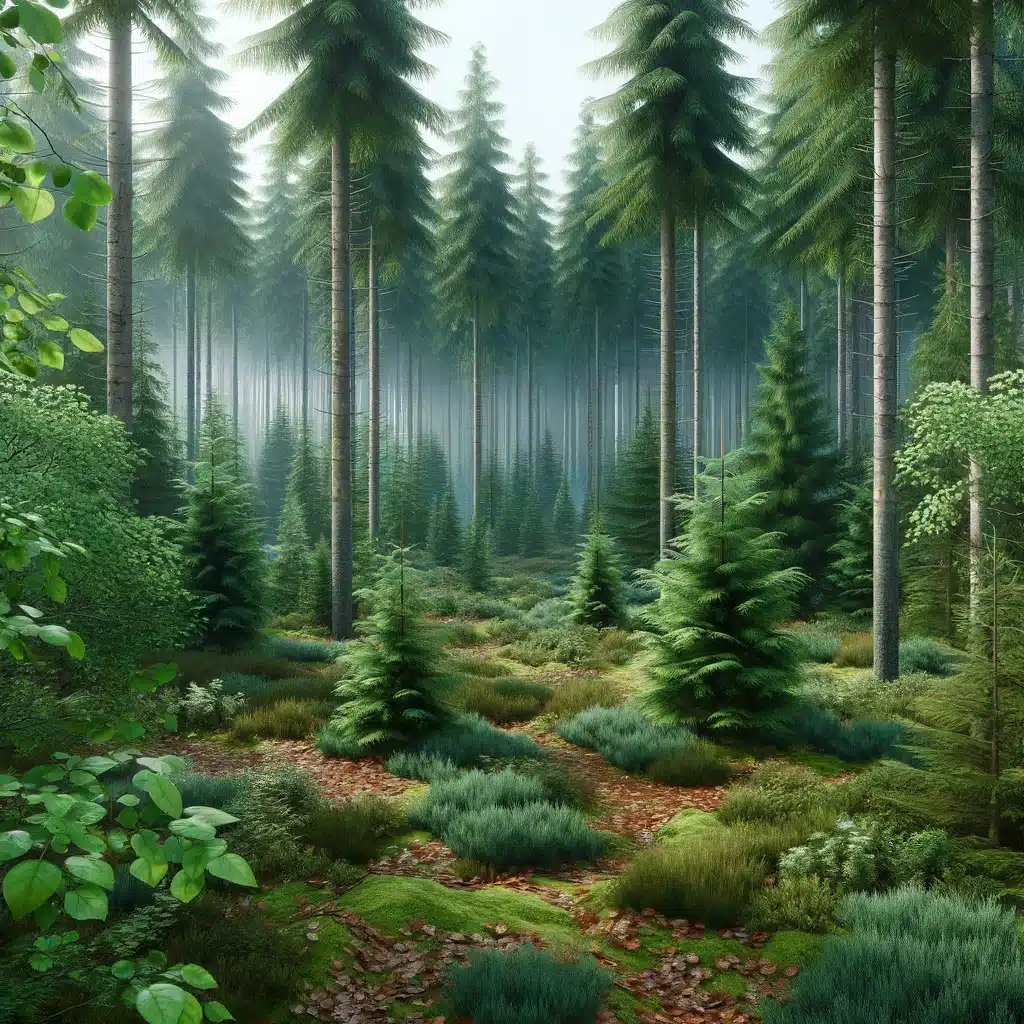
Deciduous Forest-
Deciduous Forests, such as the Eastern U.S. hardwood forests, shed their leaves seasonally. They have a moderate tree density of 500-700 per hectare and store about 120-160 metric tons of carbon per hectare. Species diversity is relatively high, with 200-300 species per hectare, adapted to seasonal changes.These forests comprised of broad leaved trees that sheds their leaves during one season. Example of the trees are oaks, beeches, birches, chestnuts, aspens etc.
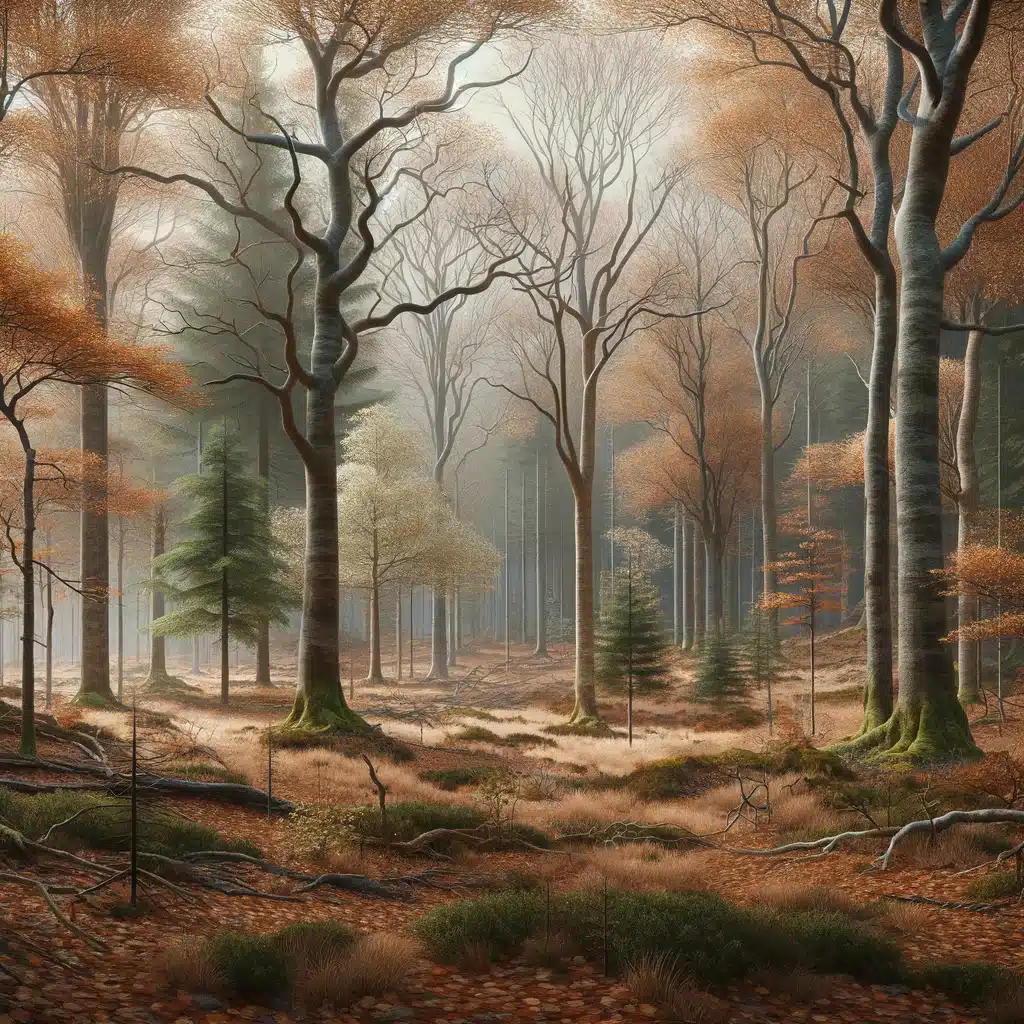
Thorn Forest-
Thorn Forests, typical of arid regions like the Sonoran Desert, are characterized by sparse, thorny vegetation. Tree density is low, around 50-200 per hectare, with carbon storage of 30-50 metric tons per hectare. Species diversity is limited due to harsh conditions, typically ranging from 40-80 species per hectare.Mangrove Forests, found in coastal areas like the Sundarbans, are adapted to saline water. They have a unique root system with a tree density of 400-800 per hectare. Mangroves are significant carbon sinks, storing about 150-200 metric tons of carbon per hectare. They support a diverse range of species, approximately 100-250 species per hectare, including many aquatic species.It is a densely covered scrubland with warm temperate areas. In South America the caatinga is called the thorn forest, in Sri Lanka the Deccan thorns are identified under this category. Examples are, Babool tree, ber tree, khejri etc.
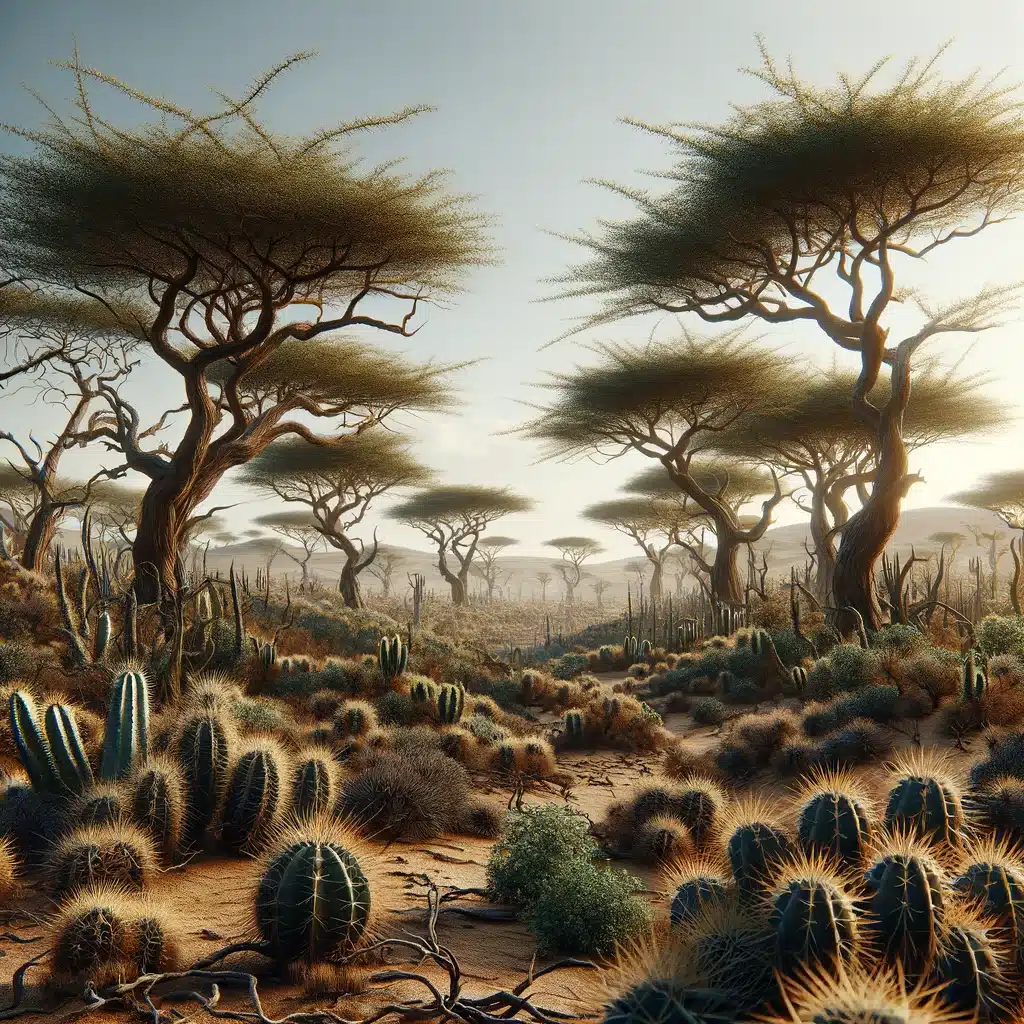
Mangrove Forest-
Mangrove Forests, found in coastal areas like the Sundarbans, are adapted to saline water. They have a unique root system with a tree density of 400-800 per hectare. Mangroves are significant carbon sinks, storing about 150-200 metric tons of carbon per hectare. They support a diverse range of species, approximately 100-250 species per hectare, including many aquatic species.It is found in swamps, wetlands occurring in intertidal zones. In Bengal, the mangrove forests of Sundarbans are of global recognition.

Functions of the forest ecosystems-
- Things obtained from the forest- Various types of food products like honey, mushroom, medicinal plants, oils; wood, timber, sandalwood are obtained from the forest. The fuel is also extracted from the barks of the old trees which remain buried under.
- Ecological functions- Forests play important role for natural factors like climate, carbon storage, nutrient conservation etc.
- Cultural and Social Causes- The tribal people worship forest as a source of nature’s goddess. Their beliefs of saving endangered species and the spirituality related to it is very rigid which is a remarkable feature and makes them unique from the urban culture.
Also Read:
- Endoplasmic reticulum in cytoplasm
- Is cell plate a cell wall
- Dna replication steps
- Protein denaturation temperature
- Do mitochondria have a nucleus
- Function monomer examples
- Protein enzyme example
- Bacteria cell wall types
- Meiosis
- Enzymes and photosynthesis
Hi..I am Sutanaya Banerjee, I have completed my Master’s in Biotechnology. I always like to explore new areas in the field of Biotechnology.
Apart from this, I like to read and travel.